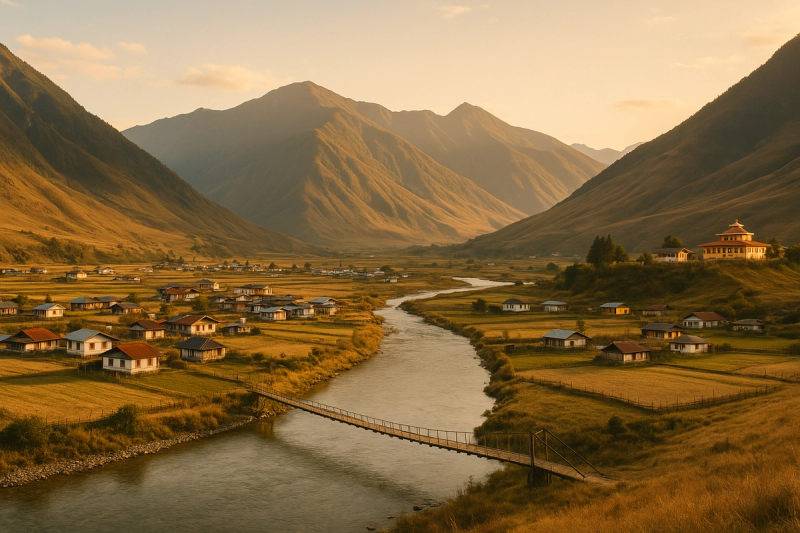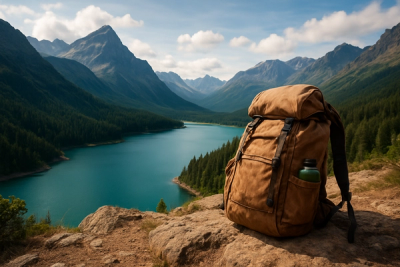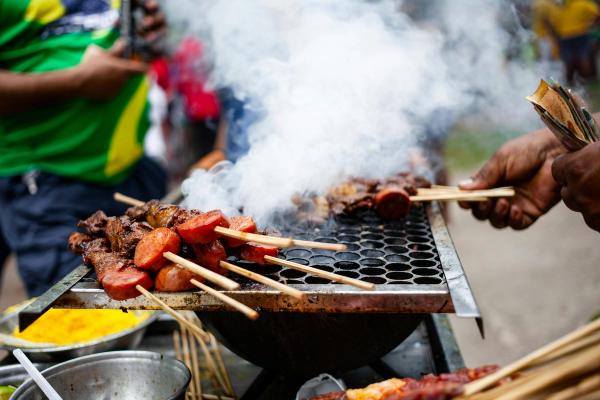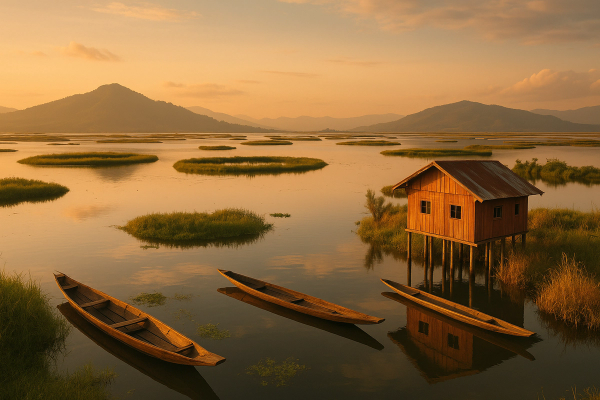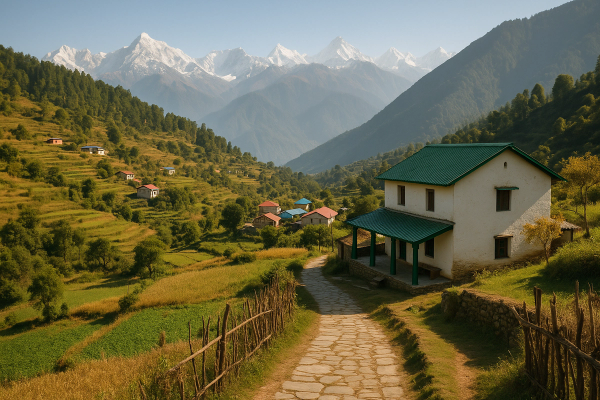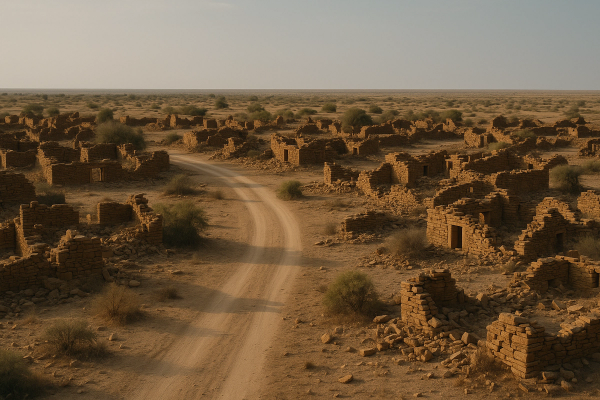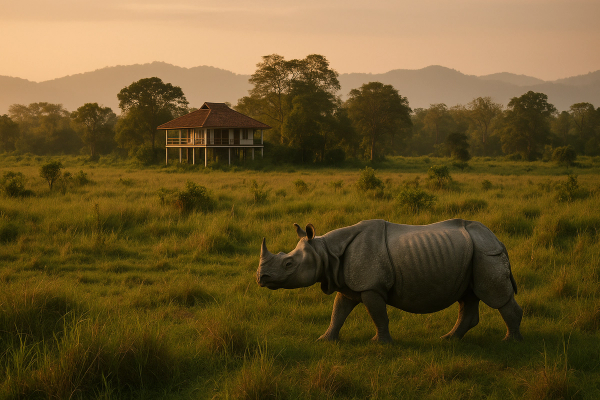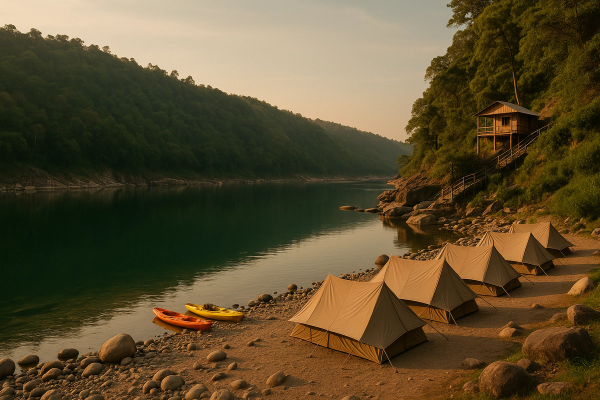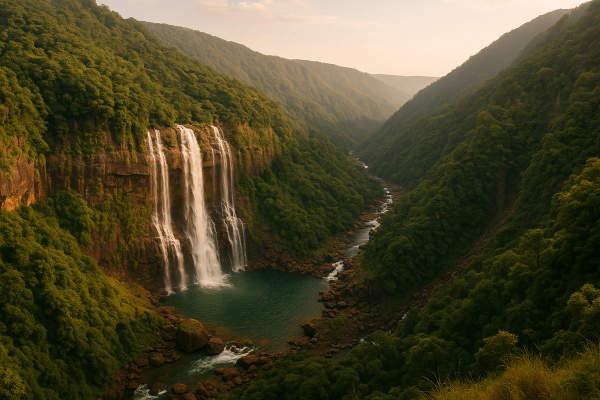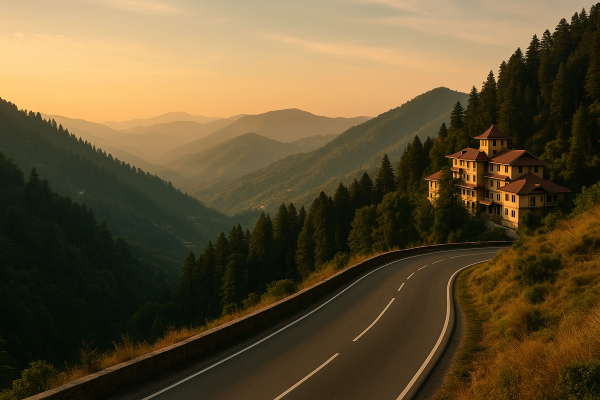Mechuka Valley Travel Guide: How to Reach, Homestays & Treks — the messy, beautiful reality from my own trip#
I’d been hearing “Mechuka Mechuka” like a whisper in travel circles for years, you know. That remote valley right near the Indo–China border in Arunachal Pradesh, almost mythical. Pictures looked unreal — blue rivers, rolling meadows, old monasteries perched like eagle nests. And honestly I thought, maybe it’s overhyped? It’s not. It’s the kind of place that sneaks into your bones. The road is long, the network disappears, and then suddenly you’re there — bright prayer flags, army trucks, wool caps, smoky kitchens, and kids playing by the Siang. I went with two friends in winter, dragging our bags into a homestay with a creaky wooden floor and a warm bukhari (wood stove). That first night, butter tea and thukpa… slept like a log. Woke up to frost on the grass and a sky so clean it felt brand new.¶
What and where is Mechuka (Menchukha) exactly — and why it’s not your typical hill station#
Mechuka, also spelled Menchukha, sits in Shi-Yomi district of Arunachal Pradesh. It’s a valley carved by the Yargyap Chu (which merges into the mighty Siang downstream). It’s close to the McMahon Line, so yes — border vibes are very real. It’s a mix of Memba, Ramo, Bokar and other tribes, with Tibetan Buddhist influence, yaks ambling in fields, and that gentle, slow pace that makes you walk softer. Altitude is roughly 6,000 ft give or take, so it’s cold in winter but not crazy harsh like some Ladakh spots (still, carry woolens, don’t be a hero). Also note: this isn’t a party town or a cafe-hopping place. It’s a valley where the army has a major presence, there’s an Advanced Landing Ground (ALG) nearby, and tourism has picked up only in the last decade. Which means homestays over hotels, prayer wheels over neon signs, and more “achha, we’ll manage” than polished systems. I actually love that kinda travel, imperfect but honest.¶
Permits and border basics — don’t land up without this, please#
Arunachal is permit territory for all non-residents of the state. For Indian citizens, you need an Inner Line Permit (ILP). Foreign nationals need a Protected Area Permit (PAP). It’s easy enough but don’t skip it.¶
- Apply ILP online at the official eILP portal (search “Arunachal eILP” — the site’s straightforward). You can also get it from facilitation centers in Guwahati, Itanagar, Naharlagun, etc.
- Carry multiple printouts + digital copy. Some check-posts prefer hard copy. Also keep ID and a couple of passport photos, although many places don’t ask now.
- Photography near army areas can be restricted. Drones — big no. Don’t risk it, seriously.
- If you’re hiring a vehicle, drivers know where to show permits on the route. Solo drivers — keep your docs handy around Pasighat, Aalo (Along), and as you enter Shi-Yomi.
How to reach Mechuka — realistic routes, timings, money, slight jugaad#
There’s no direct commercial flight to Mechuka. That ALG is military-first. So the typical flow is:
- Fly to Donyi Polo Airport (Itanagar, near Hollongi), or to Dibrugarh (Assam), or Pasighat (Arunachal) depending on your airline.
- From Itanagar or Dibrugarh, road to Aalo (spelled Along on some boards) via Pasighat. Aalo is your main hub. From Aalo you take a shared Sumo or a private taxi to Mechuka.
Shared Sumos are the backbone of West Siang–Shi Yomi travel. They’re surprisingly reliable, leave early morning, and yes, your backpack will get dusty and your butt will hurt, but they get you there. Private taxis are easier on the bones but heavier on the wallet. APSTS (Arunachal Pradesh State Transport Service) buses are also an option for parts of the route (Itanagar–Pasighat–Aalo), but for the Aalo–Mechuka leg, Sumo is the common way.¶
- Aalo to Mechuka distance is roughly 180–190 km. Travel time: 6–8 hours in good weather. Monsoon and landslides can push this beyond 10. Start at dawn, trust me.
- Shared Sumo seat Aalo–Mechuka: usually ₹900–₹1,200 per person. Book at local counters in Aalo market, ideally a day prior. They get full quickly.
- Private Bolero/Scorpio: around ₹12,000–₹18,000 one-way depending on season, negotiation, vehicle. Return trip cheaper if same driver waits and you fix a package.
- Flights to Pasighat operate on certain days; Donyi Polo Airport has more frequency. From Pasighat to Aalo is about 4–5 hours by road.
- There is helicopter service in some seasons (Pawan Hans under regional schemes) linking Dibrugarh/Pasighat/Aalo/Mechuka, but schedules are changeable and weather-sensitive. Locals use it for emergencies too. Check latest, don’t count on it.
When to go — seasons, festival mood, and a note on that adventure buzz#
October to March is peak clarity time. Autumn gives golden grass, winter gives frost and sometimes a dusting of snow. If you’re chasing snowy slopes, Dec–Feb are your best bet, though nothing is guaranteed in the mountains (climate’s acting moody everywhere). Spring (March–April) brings rhododendrons on the hillsides — unexpectedly gorgeous. Monsoon (June–September) isn’t ideal unless you love road drama. Landslides happen, rivers swell, drivers become cautious, and your plans might… wobble. Shoulder months like late Sept and early April are my favourites — fewer people, decent weather.
There’s also a growing adventure vibe. The Mechuka Adventure Festival has been held in some years around November — mountain biking, paragliding demos, river stuff — but it’s not like clockwork annually. Keep an eye on local news and Arunachal tourism handles. If it aligns, the festival is fun, very desi-adventure with a lot of heart.¶
Staying in Mechuka — homestays over hotels and why that’s actually perfect#
This is homestay country. Family-run wooden houses with cosy rooms, simple bedding, a bukhari in the common hall, and hearty meals. Don’t expect resort amenities. Expect warmth, stories, buttery tea, and a few chickens strolling around. The hosts are gentle, slightly shy sometimes, but once you chat they open up. We paid around ₹1,500–₹2,200 per person per night including two meals (dinner and breakfast). If you want separate lunch or special dishes, just ask and pay extra. Budget rooms (shared bath) can go near ₹800–₹1,200 per bed. Peak time prices climb — especially during holidays.
Small tips: carry a little room freshener (wood smoke lingers), and a hot water bag for the bed. Heaters are rare or banned because of fire risk; the bukhari is communal. Power cuts happen. Hot water is usually by bucket, and it’s the best bucket bath you’ll have, oddly satisfying after a trek.¶
- Booking: You can DM homestays via WhatsApp after finding them on Google Maps. Or ask local taxi drivers in Aalo to recommend and call ahead. Many places don’t have formal websites but do have UPI.
- Location: Some homestays sit near the new market, others closer to the old monastery ridge, and a few by the river toward Dorjeeling hamlet. The river-side ones feel extra dreamy.
- Facilities: Expect clean quilts, shared bathroom, simple wooden interiors, solar or generator backup sometimes. If you’re picky — carry a liner sheet and your towel.
- Costs: ₹1,500–₹2,500 per person with meals is pretty standard now. Solo rooms may cost more. Negotiate kindly, don’t lowball. This is remote; supplies are expensive.
Treks & strolls — the ones I actually did (and one I chickened out of)#
- Dorjeeling Village Walk: Classic half-day. You cross a hanging bridge over that glassy river, walk through meadows to a small hamlet called Dorjeeling (not Darjeeling, ha). Easy terrain, occasional muddy patches. We met two kids herding yak and a grandmother who insisted we sip butter tea, which honestly I didn’t love at first but got weirdly addicted to.
- Samten Yongcha Buddhist Monastery Hike: The old Gompa sits on a hill watching everything in silence. From town, it’s a decent uphill walk, 45–90 minutes depending on how many photos you take. Sunrise here… chef’s kiss. Please be respectful inside, no loud chatter.
- Riverbank Meander & Viewpoint Ridge: There’s a ridge trail behind the town that locals point you to — good for sunset. Nothing technical but slippery in frost. We found a lonely prayer flag pole at the edge and stayed till our fingers went numb.
- Guru Nanak Taposthan (Gurudwara) Visit: Maintained with support from the army. It’s near the river and a bit of faith-history woven into the valley’s story. Keep your head covered and behave, obviously. It’s less a trek, more a gentle pilgrimage walk.
- Longer trail toward remote hamlets: Our driver kept talking about a day-long hike to a village beyond Dorjeeling with pine forests and a hidden stream pool. We started, took the wrong turn, and ended up birdwatching instead. Didn’t regret it. But yeah — if you want proper trekking, hire a local guide; trails aren’t always marked.
Food & culture — Memba kitchens, army canteens, and that one plate of thenthuk I still dream about#
Food is simple, filling, and soul-warm. You’ll find thukpa, thenthuk (hand-pulled noodle soup), momos, tingmo (steamed buns), fried rice, local greens, and sometimes pork or yak dishes depending on the homestay. Butter tea is a thing — salt and ghee-like butter, an acquired taste. Millet or barley porridge (zan) shows up now and then. Prices are fair: thukpa ₹150–₹250, momos ₹120–₹200, chai ₹20–₹40. Butter tea around ₹50–₹80. If your homestay offers set meals, go with that — home-cooked beats shop food most days.
Culturally, the valley turns quiet in the evening. Prayer wheels spin, kids giggle, elders chat around the bukhari. There’s Tibetan New Year (Losar) around Feb–March in many Buddhist communities; nearby Aalo has Mopin festival in April (Galo tribe). If you’re lucky, you’ll catch dances, white robes, rice beer (apong) and traditional drums. Never say no to apong — say “only little” if you don’t drink much, it’s rude to refuse outright.¶
Practical stuff: money, network, safety, weather — the not-so-glam details you need#
- Cash vs UPI: UPI is surprisingly common now but data is moody. Carry enough cash. An SBI ATM exists in bigger towns like Aalo, but in Mechuka ATMs are either limited or offline. We carried a buffer ₹10–15k.
- Fuel: There’s a small fuel pump serving the valley these days, but don’t bank on late-night refills. Top up in Aalo.
- Connectivity: Jio/BSNL may show one or two bars, sometimes suddenly full for ten minutes then gone. For work calls… just don’t plan them here. It’s a lovely digital detox. WhatsApp texts go through eventually.
- Health: A primary health center exists but bring your meds. Altitude is moderate, yet cold hits hard, and dust on the road irritates throats. Basic first aid, ORS, motion sickness tablets.
- Road safety: Landslides post rain. Drivers are pros but start early and be patient. No night driving beyond Aalo recommended.
- Rules: Drone flying is banned near border and army areas, and honestly across most of the region. Even phones — ask before filming locals.
- Latest travel note: ILP is fully online now and checks are a bit stricter than earlier. Also the Itanagar airport has made getting into Arunachal easier than before, so yes — more travelers than ten years back, but it still feels beautifully remote. I went again in early 2025 and it’s still magic.¶
How much does a Mechuka trip cost? My rough numbers so you can plan without drama#
We were three friends, mid-range budget, not stingy but not splurge:
- Guwahati to Itanagar flight: ₹3,500–₹6,500 one-way depending on day.
- Itanagar to Aalo shared Sumo + bus combos: ₹800–₹1,500 per person.
- Aalo to Mechuka shared Sumo: around ₹1,000 per seat.
- Homestay: ₹1,800 per person per night with two meals (ours did that rate in winter).
- Extras: lunch, tea, snacks, small monastery donations: ₹500–₹800/day.
- Private taxi for local sightseeing (if you get lazy walking): ₹2,000–₹4,000 depending on hours and negotiation.
For a 4N/5D Mechuka-focused plan (excluding big-city flights), I’d say ₹12k–₹20k per person is realistic. If you go full private vehicle from Aalo and stay in nicer rooms, ₹25k+ isn’t hard to hit. Backpackers doing only shared rides and the cheapest beds can squeeze under ₹10k, but don’t cut too many corners — support the locals, ya.¶
A chill 4-day plan I’d happily repeat (adapt as per weather)#
Day 1: Reach Aalo from Itanagar/Pasighat, grab permits printouts if needed, book Sumo for morning, eat early dinner, crash.
Day 2: Aalo to Mechuka. Settle in, gentle riverbank stroll, sunset ridge. Butter tea trial. Sleep.
Day 3: Old Monastery hike at sunrise, Gurudwara visit late morning, Dorjeeling hamlet walk post-lunch. Evening by the bukhari, talk to your hosts.
Day 4: Longer forest trail with a local guide, or just slow day — photographing prayer flags, maybe try yak milk if available. Small shopping: local wool caps, handmade trinkets. Pack.
Day 5: Early Sumo back to Aalo. If roads are clear and you’ve time, detour via Pasighat and watch the Siang turn wild. Head out.
Adjust for snow or rain. If an adventure event is happening, swap Day 3 for festival grounds — bikes, rope courses, all that. Don’t overschedule; Mechuka rewards slow travel.¶
Little things that made the trip — and a couple I messed up#
- We carried a tiny Bluetooth speaker and kept it very low by the fire, old Hindi songs, felt like a mountain cafe without the pretence.
- I packed gumboots thinking I’m smart. Actually normal trekking shoes with good grip were better; gumboots are clunky unless you’re in heavy slush.
- We underdressed one sunset and nearly froze, then shared noodles from a street stall. The aunty laughed and said, “Yahin rehna, thoda aadat ho jayega.” Wish I could.
- I forgot a torch the first day. Phone flash works until it doesn’t. Carry a torch.
- Respect the valley. We saw two tourists climbing a fragile fence for a photo; locals were too polite to shout. Don’t be that person.¶
If you’re tempted to work remotely from Mechuka… quick reality check#
I tried sending a 20 MB file. Took an hour, then failed. Calls drop randomly. Power comes and goes. Honestly not a work base unless your job is offline writing or you’re OK being unreachable. Which is kinda the point. Use airplane mode. Read. Walk. Let the mountains recalibrate you. Me and him went on a long silent walk by the river and I swear — the brain fog cleared. We returned and didn’t even feel like scrolling. Wild, right?¶
Eco-responsible travel — small habits, big respect#
- Carry trash out. Bins aren’t everywhere.
- No soap in streams. If bathing, use a bucket at the homestay.
- Don’t pluck flowers near monasteries, it’s rude and also… just don’t.
- Hire local guides for longer treks instead of wandering blindly. It’s safer and supports the community.
- Ask before photographing people. Kids love it but parents might not.
- Plastic bottles — refill at the homestay with boiled water. Saves money too.
Basically, be a decent human. This valley’s beauty is not infinite. Treat it like your nani’s house — gentle, grateful.¶
Mechuka isn’t the kind of place you tick off a list. It’s the kind you carry home in your pockets — like river light and wood smoke and soft-spoken hellos.
Final thoughts — go slow, stay warm, say thank you#
If I had to sum it up, Mechuka gives you space. Real, quiet space to breathe. Roads can be tough, permits a bit annoying, homestays rustic — but the exchange is massive. More sunrises than emails, more human than hustle. Go in autumn or winter, carry cash, respect the army rules, chat with your hosts, and walk a lot. You’ll come back different, a little softer.
If you want more travel stories and practical guides like this, check AllBlogs.in — I keep finding solid tips there that actually help you plan without the headache. See you on the next road, somewhere beyond the last phone tower.¶

